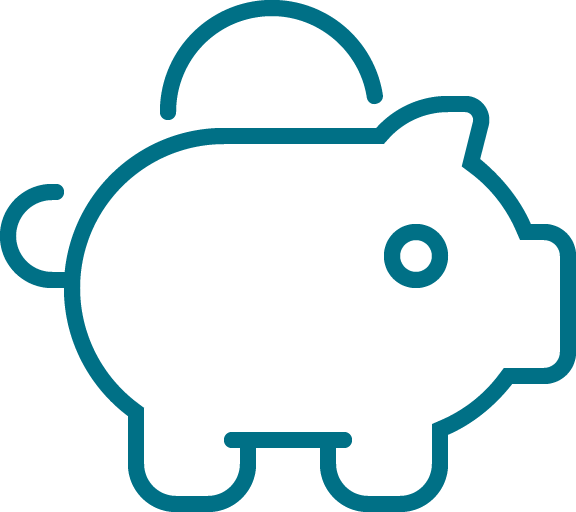by Jayme Radomski | Jan 9, 2023 | Cleaning, Organizing
The new year brings a desire to clear out the old, bring in the new, focus on goals and be more productive. Making a clean sweep through your life and home will help you focus on all your new year goals and plans. Top Shelf Home Organizing has created a list of simple organizing projects to start the new year that will not cost you anything.
The new year brings a desire to clear out the old, bring in the new, focus on goals and be more productive. Making a clean sweep through your life and home will help you focus on all your new year goals and plans. Top Shelf Home Organizing has created a list of simple organizing projects to start the new year that will not cost you anything.
After weeks of celebrating and entertaining, your home likely needs a good cleaning. Set up a cleaning schedule that allows areas of your home to be cleaned regularly. Involve family members in the plan to share the workload. Keep cleaning supplies in a central location so everyone knows where to find them and you know when they are running low.
Assess your wardrobe and remove clothing items that do not fit, are worn out or do not make you feel fabulous. Reducing your clothing to what you love will lift your spirits and make mornings easy. Clothing items can be donated or sold.
A good pantry assessment will help plan meals and save money in the new year. Remove all items from the pantry, organize them by food type and plan your meals based on the food you have. Organizing your pantry will get you started on your healthy eating and money saving resolutions.
5. Take a Break from Buying
This month, as you plan for the new year and go through your stuff, don’t buy anything. As you remove items don’t rush out to purchase a replacement, take time to be without. You will be surprised how much less you can live with. Getting organized in the new year also does not mean that you need to spend on organizing gadgets. Reuse organizing items you currently have, or use boxes and containers from around your home. After you have fine-tuned your organizing system, then consider purchasing new storage products.
6. Don’t Ignore Your Feelings
Your home is where you rest and rejuvenate. Items in your home that cause sadness, stress and anxiety don’t belong. Consider keepsakes that bring bad memories all the way to items in disrepair that strike anxiety every time you think of them. As you clean and organize throughout your home, remove these items as they come up. The bad feelings need to go.
This list is enough to get you off to a great start this year. Decluttering is a process and cannot be done in one hour or one day. Start with areas with the biggest impact and start the snowball rolling. After years of working with busy families, we know where to focus. When organizing and decluttering overwhelms you, we are happy to help. Reach out to Jayme at Top Shelf Home Organizing to get you started on the right track.
by Jayme | Sep 21, 2022 | Digital, Organizing
 When planning to organize an entire home, keepsakes and photos are typically the last category. These items are the most sentimental and slowest to organize. Photos in particular take time as they bring back memories of life’s most cherished moments. To make photo organizing manageable, break the project down into basic organizing steps.
When planning to organize an entire home, keepsakes and photos are typically the last category. These items are the most sentimental and slowest to organize. Photos in particular take time as they bring back memories of life’s most cherished moments. To make photo organizing manageable, break the project down into basic organizing steps.
1. Gather
Gather all photos together into a work area that can be dedicated to photo organizing for a long period of time. For digital photos, keep a notebook record of all the devices, websites, disks, drives, and apps you have photos stored to. Digital photos will be gathered in the organizing step.
2. Sort
Sort photos by date. When dealing with a large quantity of photos, you may want to sort by decade to start. Each decade can then be sorted further into years and then months. If you prefer to keep photos organized by events or holidays, you will still want to keep them chronological, but consider adding extra labels to the organizing to flag these events. For digital photos this should be relatively easy as they can be sorted by the date the photo was taken or stored.
The challenge of sorting digital photos is the multiple locations they are stored. Refer to your notes on where you have photos stored and sort photos one location at a time. Physical photos will take some time. Have some photo boxes, shoe boxes, or small bins on hand for sorting.
3. Purge
Choosing which photos to purge will be challenging. Some people will keep just good photos that represent events. Most people will take time to closely look at each photo and may not want to reduce any. The easiest photos to get rid of are duplicate photos. You may also consider reducing photos that are poor quality or blurry. With digital photos, it is easy to take many photos of the same pose. Try your best to select one or two of the best photos to keep.
4. Organize
Organize photos in a way they can be viewed the easiest. For physical photos, they should be neatly organized chronologically with tabs to note dates (years and months) and events. Photo boxes or bins work well for physical organization.
Digital photos should be stored in a common place, chronologically. Consider cloud-based storage for a central location for all digital photos. Understand this will take time to move files from all locations into a central location. You may also consider digitizing your physical photos and storing with the digital photos. Back up your photos to an external hard drive or other non-cloud-based storage method.
Break the Project Down
Organizing photos is not a weekend organizing project. It is a process that will take months or years to complete. Breaking the project down into small pieces will make it easier and more enjoyable. Keep your eye on the goal of having all your photos organized, easy to retrieve, and easy to share with others.
by Jayme | Mar 8, 2022 | Cleaning, Organizing
 These quick organizing tips will get you and your house ready for the first warm spring day. Block your calendar this month to prepare your home for spring. Take it one task at a time and soon you’ll be ready for your first backyard barbecue.
These quick organizing tips will get you and your house ready for the first warm spring day. Block your calendar this month to prepare your home for spring. Take it one task at a time and soon you’ll be ready for your first backyard barbecue.
1. Winter Décor
Let spring in your home by packing away your winter décor. Add some fresh flowers and bright colored pillows to your home.
2. Patio Furniture
Take patio furniture out of storage and give it a good wash down.
3. Entry Doors
Wash down the inside and outside of all entry doors and storm doors. Remove dust and webs from entryways. The sun will shine nicely through the fresh glass.
4. Coat Closet
Organize your coat closet by removing any coats not worn in the past year, laundering the coats, and hanging them the same way.
5. Back Entryway
Remove all items from the back entryway. Wipe down the walls, the baseboards, and give the floor a good scrub. Pack away winter items and bring out the spring jackets, shoes, and umbrellas.
6. Winter Outerwear
Wash and dry or dry clean all winter outerwear before packing it away. Pack winter wear loosely in bins or hang garment bags on clean coats to keep them fresh for the next season.
7. Windows
Wash your windows inside and out. Wipe webs and dust from window frames, and vacuum dust from sills. The clean windows will brighten up your space on warm spring days.
8. Grill
Pull out your grill and give it a good cleaning. Scrub down the grates, degrease the base, and polish the stainless. Check the level in the propane tank so you are ready to grill some burgers.
9. Vehicle
A warm, dry day is a great time to clean the salt and dirt on the inside and outside of your car. It is such a good feeling to have a clean car on a warm spring day.
Top Shelf Home Organizing loves to help busy families transition to the new season. We would love to chat with you about creating a plan to get your home ready for spring. Give Jayme a call.
by Jayme | Feb 8, 2022 | Clutter, Cooking & Kitchen, Eating & Kitchen, Organizing
 The new year is in full swing. Healthy eating and conscious kitchen choices are likely some of your new year’s goals. This month, we offer ideas on the 14 best areas to focus for decluttering and organizing your kitchen. Every day or two this month, declutter and organize your kitchen by breaking it down into small categories. You will feel a revised focus on your healthy eating goals.
The new year is in full swing. Healthy eating and conscious kitchen choices are likely some of your new year’s goals. This month, we offer ideas on the 14 best areas to focus for decluttering and organizing your kitchen. Every day or two this month, declutter and organize your kitchen by breaking it down into small categories. You will feel a revised focus on your healthy eating goals.
1. Baking dishes
Gather, sort, and evaluate all your dishes intended for baking. Simplify your inventory to the most practical items. Replace items that have lost their non-stick finish, are starting to rust, are starting to warp, or are only used on rare occasions.
2. Seasonings and spices
Pull out all seasonings and spices. Purge those that are expired, lack aromatics, are hard, or will not be used. Inventory what you have in writing, and make a list of what you need to replenish.
3. Coffee mugs
Mugs can consume a large amount of real estate in a kitchen. Consider the number of people in your home that use mugs and how often they are used. Simplify the quantity of mugs to what is practical in your kitchen.
4. Water bottles
Water bottles also take up a lot of space in a kitchen. Limit the quantity of water bottles to the number of people in your house. Bottles that require handwashing, have difficult spouts, tend to leak, or are not popular should be purged.
5. Freezer
Dig deep, inventory your kitchen freezer and deep freezer. Purge items that are old, smelly and show freezer burn. Meal plan around the freezer food you keep to reduce inventory and save money.
6. Formal entertaining dishes
Realistically examine the formal dining and service dishes you need to have on hand. Keep a practical set for a typical gathering. Reconsider if you need specific dishes for a specific holiday.
7. Bar glasses
A general set of tumblers, wine glasses, and pint glasses work well for most cocktails. Ditch the narrowly defined glasses that take up room in your cabinet.
8. Glasses
Reduce your daily glassware to what you use in a day. Every souvenir glass you have collected during your life likely doesn’t fit in your kitchen. Stick to the drinking glasses that are practical for your household and lifestyle.
9. Storage containers
Storage containers have a history of reproducing while you are not looking, and then ditching their partnering lid or base. Gather all storage containers, match up sets, and remove the misfits. Storage containers also take up a large area in your kitchen, so it is important to keep them under control.
10. Specialty gadgets
Avocado slicers’ and pepper storage containers might be fun gift items. But these specific, specialty items that are rarely used take up a lot of space. Consider more multiuse gadgets that are practical and don’t use up your precious kitchen space.
11. Small appliances
So many appliances for so many creative kitchen uses are available. The ideas are unlimited. Small appliances can be economical and practical if they serve more than one purpose and are used more often than once per year.
12. Disposable dishes and flatware
Disposable dishes and flatware from takeout and past parties may be taking over a cabinet in your kitchen. Gather all these items and intentionally plan to use them up. The kids will love having their breakfast on some cute happy birthday plates.
13. Snacks
The pantry likely has a collection of opened bags of snacks and crackers, and an inventory of candy from the past holiday. Get all of the snacks and candy together. Purge those that are stale, old, and completely unhealthy. Use up any opened snacks for your next family movie night. Keep the candy on hand for special treats and rewards for good behavior (if you decided to keep any).
14. Condiments
Condiment packets from school lunches and take out may be filling a drawer in your kitchen. Reduce the amount of condiment packets. Gather them all together, throw out any old condiments, keep a small selection of condiments you would use, and donate all the extras to a food pantry.
Now it is time to get started!
Take this month to work through your kitchen and remove the stuff that doesn’t meet your needs and takes up your limited kitchen space. Take the project category by category. It will keep you focused and it doesn’t require a large block of time.
If organizing your kitchen is overwhelming, Top Shelf Home Organizing would love to help. Contact Jayme for more inspiration.
by Jayme | Jan 17, 2022 | Clutter, Organizing
 The new year brings a desire to clear out the old, bring in the new, focus on goals, and be more productive. Making a clean sweep through your life and home will help you focus on all your new year goals and plans. Coming up on Top Shelf Home Organizing’s eight year of helping busy families, we created a list of impactful things you can declutter to have the best year yet.
The new year brings a desire to clear out the old, bring in the new, focus on goals, and be more productive. Making a clean sweep through your life and home will help you focus on all your new year goals and plans. Coming up on Top Shelf Home Organizing’s eight year of helping busy families, we created a list of impactful things you can declutter to have the best year yet.
1. Schedule
Take a real look at your busy schedule. Create a priority list of activities. Start with the time required to make money and care for your family. Then look at what makes you happy and healthy. Time wasters that do not fulfill the above can be seriously reconsidered. Your time is precious.
2. Email
Take some time to clean out your inbox. Create a list of action items from your email to tackle at another time in order to keep focused on clearing the emails. Unsubscribe to any email lists that you do not want to continue receiving. Consider a separate email account for retail promotions and other non-business email lists.
3. Holiday Decor
As you are packing away your seasonal décor, donate the items you did not use or did not enjoy this past season. This will make packing away décor and decorating next holiday much easier. More tips on Organizing Holiday Stuff here.
4. Pantry
Eating healthy in the new year means cleaning out the junk from the pantry. Clear out any food that is expired or doesn’t align with your healthy eating goals. Follow these Simple Steps to Pantry Organization here.
5. Food Containers
Has your stock of food storage containers expanded over the holidays? Clear out any mismatched lids and containers that do not match, return any containers to family and friends, donate the extras that you do not need. More ideas on Framework for Organized Kitchen here.
6. Clothes
Donate the clothes you did not wear in the past year. If you did not have the desire or reason to wear some of your clothes in the past year, chances are you won’t wear them this year. Find a good charity you want to support and donate your clothes. More on Wardrobe Decluttering from Conway Image Consulting here.
7. Personal Products
Clear out your personal products by discarding old, expired make up, lotion, perfume and soap. Get rid of products you do not use or are not the right fit for you. Unopened, unexpired items can be donated to a shelter or social services program. Learn more Fun Bathroom Organizing Tips here.
8. Toys
Any toys your kids did not play with in the last 12 months can be sold or donated. If they didn’t play with them in the last year, they likely will not play with them this year.
Get Started!
This list is enough to get you off to a great start this year. Decluttering is a process. It cannot be done in one hour or one day. Start with areas with the biggest impact and start the snowball rolling. After years of working with busy families, we know areas to focus on.
When organizing and decluttering overwhelms you, we are happy to help. Reach out to Jayme at Top Shelf Home Organizing to get you started on the right track
by Jayme | Nov 1, 2021 | Busyness, Clutter, Organizing
 Decluttering is one of the first steps to an organized home. The emotions that emerge when sifting through items in your home can overtake your motivation to declutter. We all experience emotions when working through items acquired through our life experiences. Hope, fear, guilt and emotional attachment may prevent us from decluttering our homes. Identifying, understanding, and overcoming these emotions will help you create the peaceful home you desire.
Decluttering is one of the first steps to an organized home. The emotions that emerge when sifting through items in your home can overtake your motivation to declutter. We all experience emotions when working through items acquired through our life experiences. Hope, fear, guilt and emotional attachment may prevent us from decluttering our homes. Identifying, understanding, and overcoming these emotions will help you create the peaceful home you desire.
Here are some key areas to consider to help overcome these strong emotions.
Setting Small Goals
Have you started to declutter in the past, but the project was too overwhelming? When emotions arise, cutting the clutter can be nearly impossible to tackle. Breaking the process down in steps or a method can make the project manageable and reduce overwhelm. Instead of telling yourself you are going to organize the basement this weekend, set the goal of gathering one category of items. Getting all items together is a task that is clearly defined and does not bring on the overwhelm of the entire organizing process.
Gathering tools, pants, or pots and pans feels much more manageable than getting an entire room organized in one weekend. Once a category is gathered, set the next goal of sorting the category. Dividing the items into: need/love, don’t need/dislike, and might use/its okay categories is a task that can be completed in a reasonable time. Breaking down the individual tasks in an organizing project will help reduce overwhelm.
Letting Go
The things in our home and life arrived because of a life event. Revisiting these items may bring back memories. A college backpack, an engraved pen set, wedding dress, handwritten notes and cards, artwork, sporting goods, or tools and crafts were acquired at a time of life when there was an accomplishment, celebration, or a life change. It was a big time in your life. An array of emotions may surface when approaching these things making you feel the need to keep the items. Understand these items are not who you are. Your life experiences have shaped who you are today, not the stuff. Letting go of items will not change who you are, what you have experienced, or what you have accomplished.
Fear
The emotion of fear prevents us from decluttering our homes. We keep items because they offer a sense of security. Fear may exist because you feel you may not have the resources someday to purchase the items or the items may not be available.
The first step in overcoming this fear is understanding if you will even need or use the item someday. You may be hanging on to hobby items you will not have the time or physical ability to use again, but fear if you get rid of them, you may not have the resources to purchase them again. You may have a pantry full of expired food because you fear you may not have the resources someday to buy food. You may fear you will hurt someone if you donate the wedding gift they gave you. Understanding why you are afraid of purging the things in your home can help you overcome the fear and be realistic about what you keep in your home.
Would You Buy It Today?
Ask yourself if you would buy the item today. This question is great when you are decluttering household items, personal care items, and clothing. If you were to make a decision on whether to purchase a particular item right now, would you? Would you purchase that kitchen gadget, lipstick, or clothing item you have in your closet today? You may have truly enjoyed the item at one time. Maybe you believed the item would make you more efficient in the kitchen. If your answer to this question today is anything but “yes,” the items do not have a place in your home.
At Top Shelf Home Organizing, we love to help busy households get organized. If you are looking for guidance on getting your home organized, reach out to Jayme.












